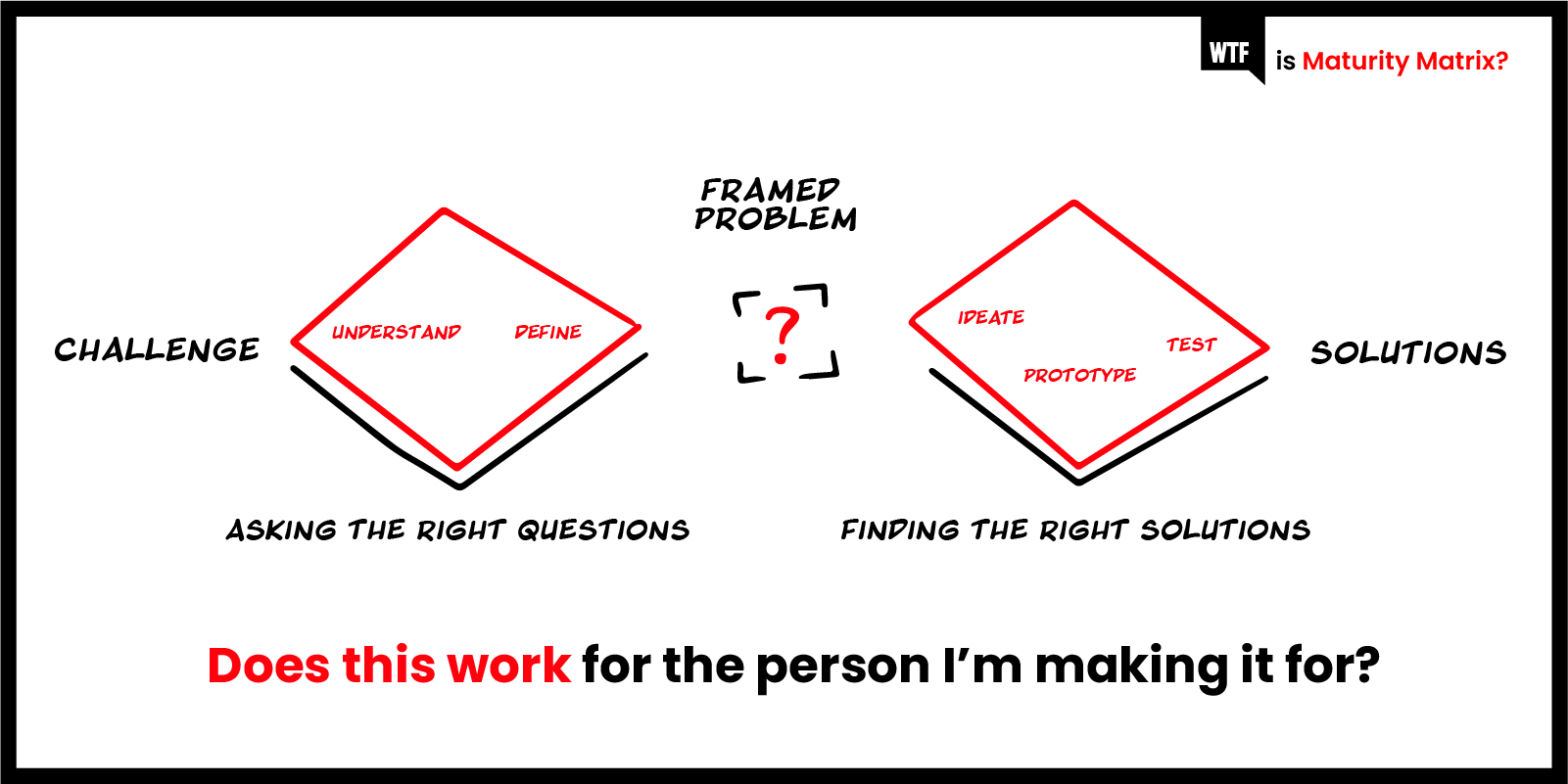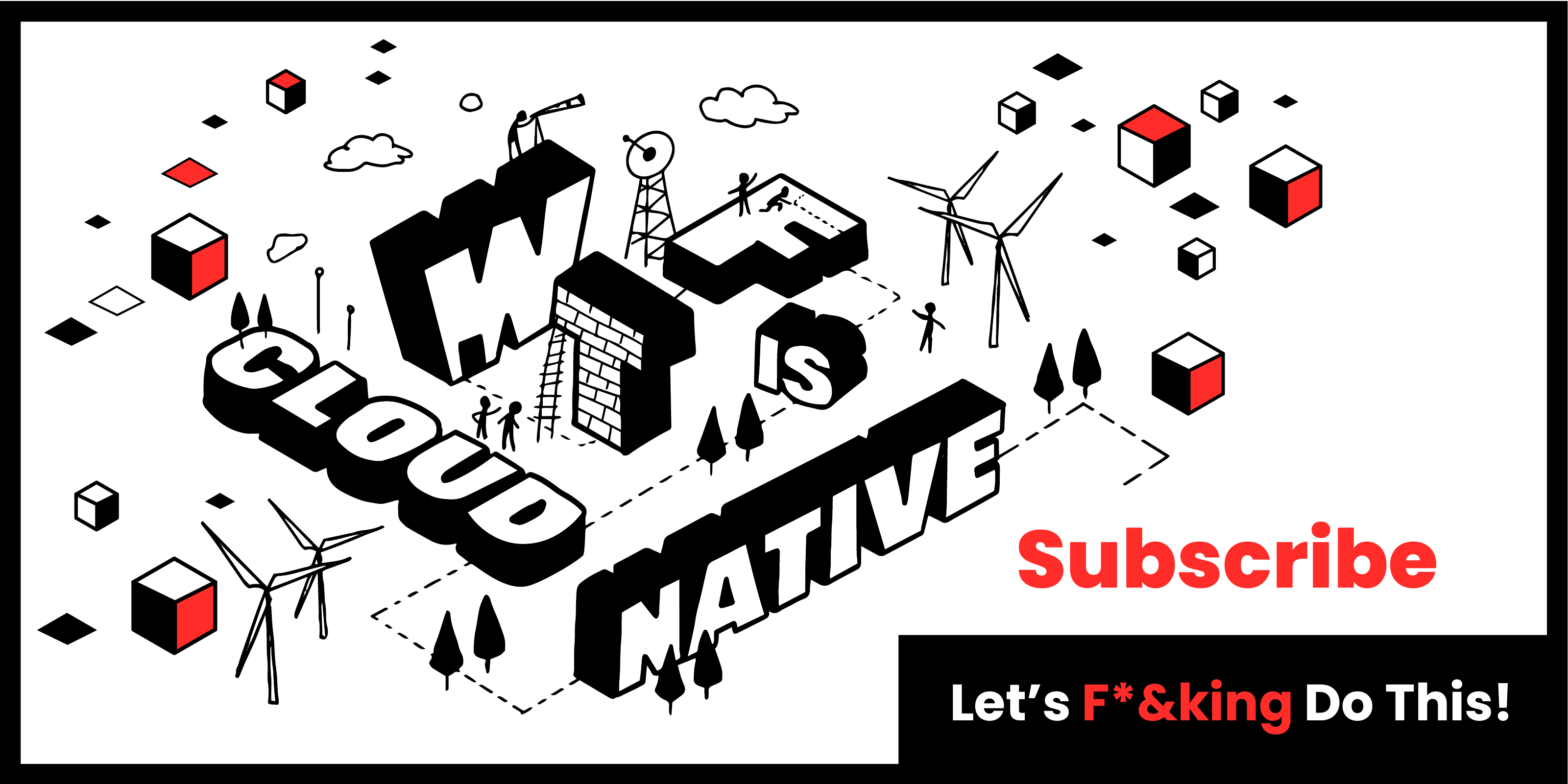Put simply, Design Thinking is a method for getting solutions to problems that really work for the people you’re designing for. Applying it gives you more focus on the real problem, more understanding of the people involved, and ideas that really work. It’s essential for Cloud Native companies and for everyone who spends time trying to fix something for someone else.*
*And no, it’s not brainstorming, nor spending a day with Post-It notes and a group hug. You can’t hug over Zoom anyway.
Design Thinking looks to challenge the lazy, often processless way we try to fix problems. Let’s see how problems are normally solved in business with a quick example.
You’re on your 11 millionth zoom call on a Tuesday morning, having a chat with one of your favourite and most important colleagues, and you notice they’re looking a bit uncomfortable. Maybe they’re shifting their weight around a bit, grimacing occasionally, having trouble paying attention. You’re an empathetic person, so you want to help.
This is where you kick into action. You gather your best and brightest and give them a brief that looks something like this: get that guy a new chair.
Over the course of several weeks and lots of cash, you and your team research the best chairs on the market. You pore over the latest ergonomic research. You bring in physicians, researchers. Someone says ‘AI!’ and you spend a load of money on that too, and realise that chair design is years behind the best and most advanced ergonomics research. ‘My God, we’re geniuses!’, you and your team declare. You high five each other and start looking for a designer.
Building the Right Product
More money, more time. Your new design is ready, you prototype, you manufacture, and good grief, you’ve made the best chair the world has ever seen. You tie a bow round it, deliver it to your colleague’s house, congratulate yourself and your team on a truly fantastic job, and move on to the next problem. Confident that you’ve done the best job anyone could have done to solve the problem of ‘needing to sit down’.
But here’s where you might have gone wrong: while there can be no doubt you designed and built a great product, did you design and build the right product?
You correctly identified that your colleague was uncomfortable. They were sitting down at the time, so you surmised that the issue was their chair. But....
- Maybe their bed had given them a backache?
- Maybe they’d been to the gym and were suffering a bit?
- Maybe they’d eaten a bit too much for breakfast and were feeling a bit too full?
- Maybe the grimace was because their internet was failing?
- Maybe your internet was failing?
- Maybe they’d been stung by a wasp?
- Maybe they’d stubbed their toe on the way to their desk?
You had a bunch of assumptions going into your design that you hadn’t stopped to consider. Do you think you really solved their problem now?
How Design Thinking Helps
So let's look at three ways Design Thinking will help you solve the problem right, first time.
1. It makes you consider everything that could be the problem, not just what’s in front of you.
It’s counterintuitive, but to solve a problem you should spend more time understanding it than you do fixing it. While in the moment, it feels like you’re getting work done and are moving quickly. But the chances are that you’ll run into problems later that would’ve been avoided if you’d spent more time exploring the nature of the problem.
And this is where Design Thinking can be so powerful. Because, instead of making assumptions based on limited information, a properly designed, run, and facilitated Design Thinking workshop will force you to reframe the problem you see and take in information from different sources: a story from a customer, a piece of research from the lab, the latest news and events. It asks you to broaden the scope of your problem to make sure nothing is missed.
For example, for our uncomfortable colleague, we could start from the working-at-home experience, rather than the chair experience. That’ll mean it’s not just chairs, but desks and beds and home and exercise that could be your solution.
2. It makes you listen to the person having the problem, and understand they might not have the answer.
The advertising pioneer David Ogilvy was right when he said, ‘People don't think what they feel, don't say what they think, and don't do what they say’. When we look to answer our problems, we think that whatever comes to mind first must be the right thing. So when someone asks us what’s wrong, we blurt out the first thing we can think of.
Through Design Thinking you’ll spend time really getting to know the person and interpreting what they may not be able to tell you. And digging into why the answer given first might not be right. What we’re trying to build is empathy with our person having a problem; to understand their world and the context around the problem. There’s no real substitute for spending time getting to know someone. And Design Thinking gives you that.
We then keep the people we meet close to us whilst designing a solution to their problem. Constantly checking in that we’re on the right path, but knowing they may not think through their problem all that often. The skill here in Design Thinking is to turn people’s thoughts and needs into ‘a-ha’ moments for businesses, and to take actions to make ‘a-ha’ into ‘wow’. No one in the process should be thinking about how cool their idea is, or how much their boss will like the idea. Just focus on the people around your problems.
3. It makes you get more ideas out and be comfortable with being wrong.
As a rule of thumb, while a Design Thinking sprint is all about coming up with an idea and a solution, in the first iteration typically only about 20% of the total time of the sprint will be dedicated to getting ideas out.
But we still want great ideas! By following the process you’ll be in a better position to get new ideas, check them quickly against what you think you need, and build them up into something you can test with the real world.
And that process of testing, listening to feedback, and tweaking the idea means that your minimum viable product focuses a little harder on the viable part, and doesn’t excuse faults as ‘Well, it’s only a minimum’. The Design Thinking process makes you feel less attached to your good ideas too, as your only goal becomes, ‘Does it work for the person I’m making this for?’ It’ll force you into a place where failure becomes learning and ideas flow easily—making you more comfortable with not always being right.
Overall, Design Thinking is a great process for getting things done, and done well. We’ll be following up soon with how you can actually run the Design Thinking process in your company using a great example problem. If you want to come up with more ideas, built for people, in the context of their lives, then Design Thinking is for you.
Related Cloud Native Patterns
Design Thinking for Radical Innovation
Whether faced with a radical new idea or a big problem, Design Thinking can be used as a process for first brainstorming a robust list of solutions and then narrowing it down to the best possibilities for actual exploration.
Decide Closest to the Action
Those nearest to a change action get the first chance to make any decisions related to it.
Learning Organisation
An organisation skilled at acquiring information, creating insight, and transferring knowledge can tolerate risk with confidence and solve difficult problems through experimentation and innovation.
Manage for Creativity
Teams charged with innovation need the open-ended freedom to experiment their way to solutions without pressure for delivering specific results on a set schedule—and the freedom to sometimes fail along the way.


 Previous article
Previous article
